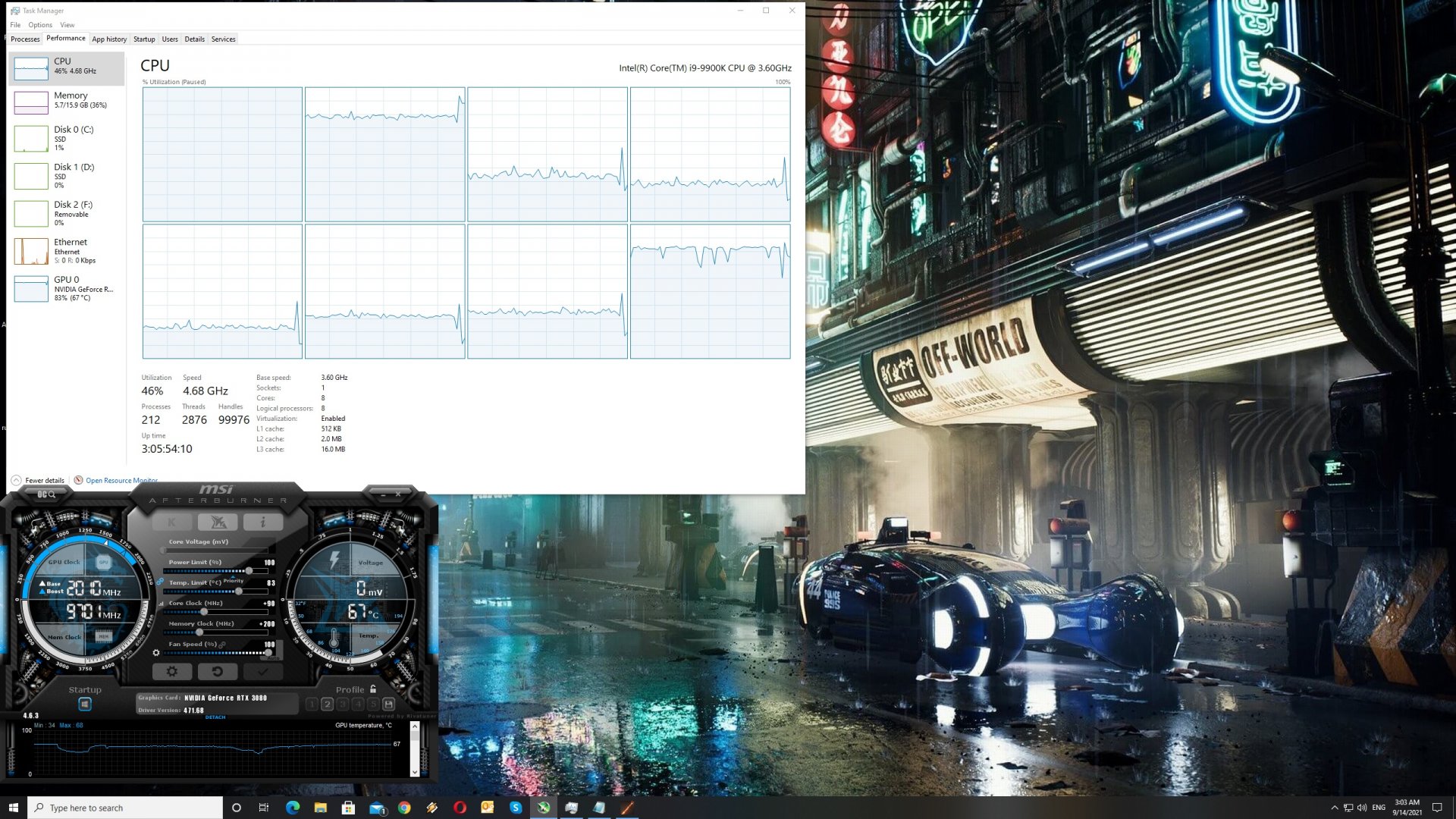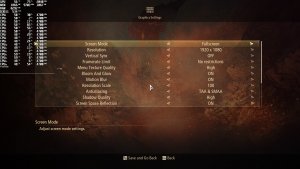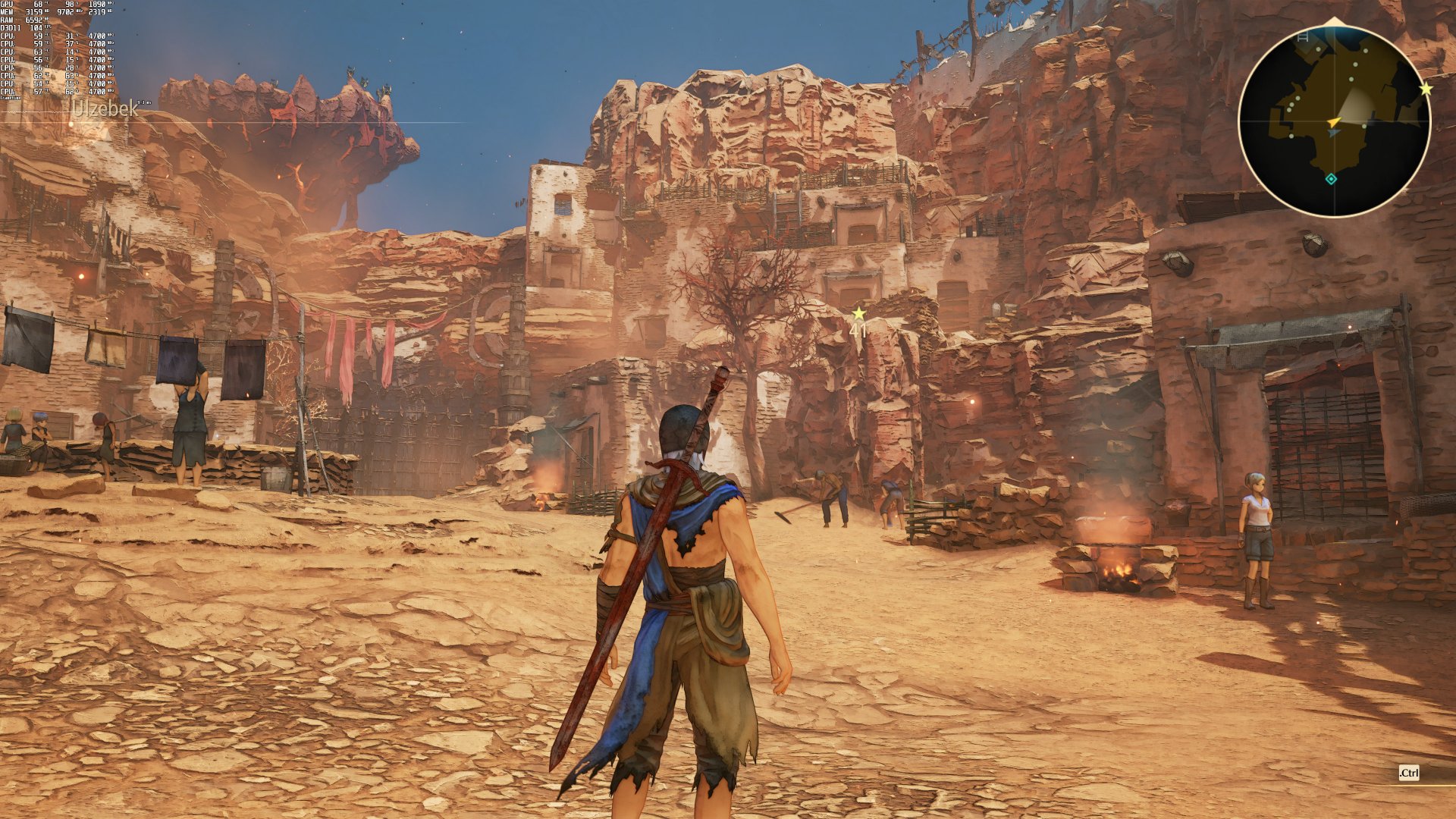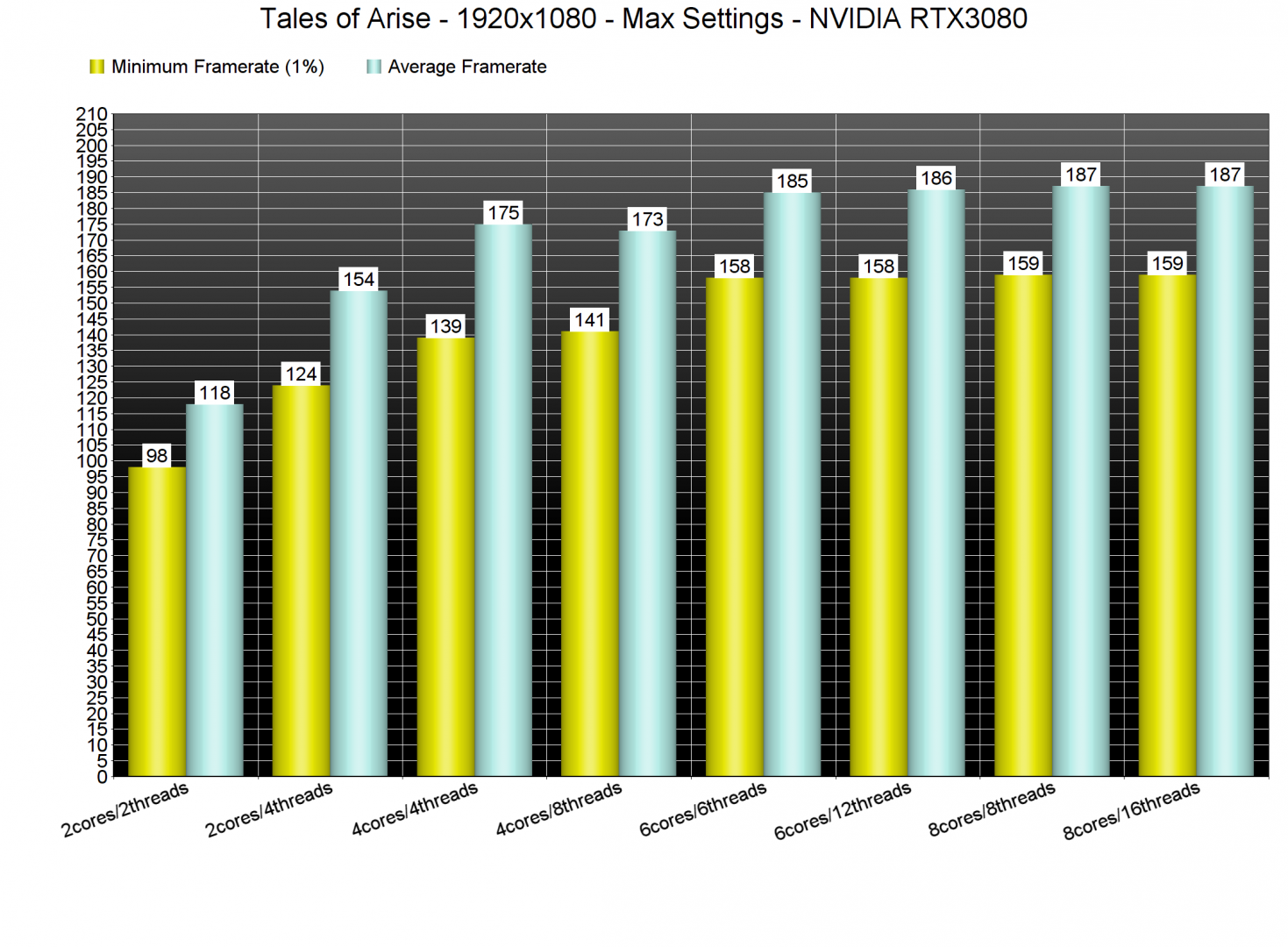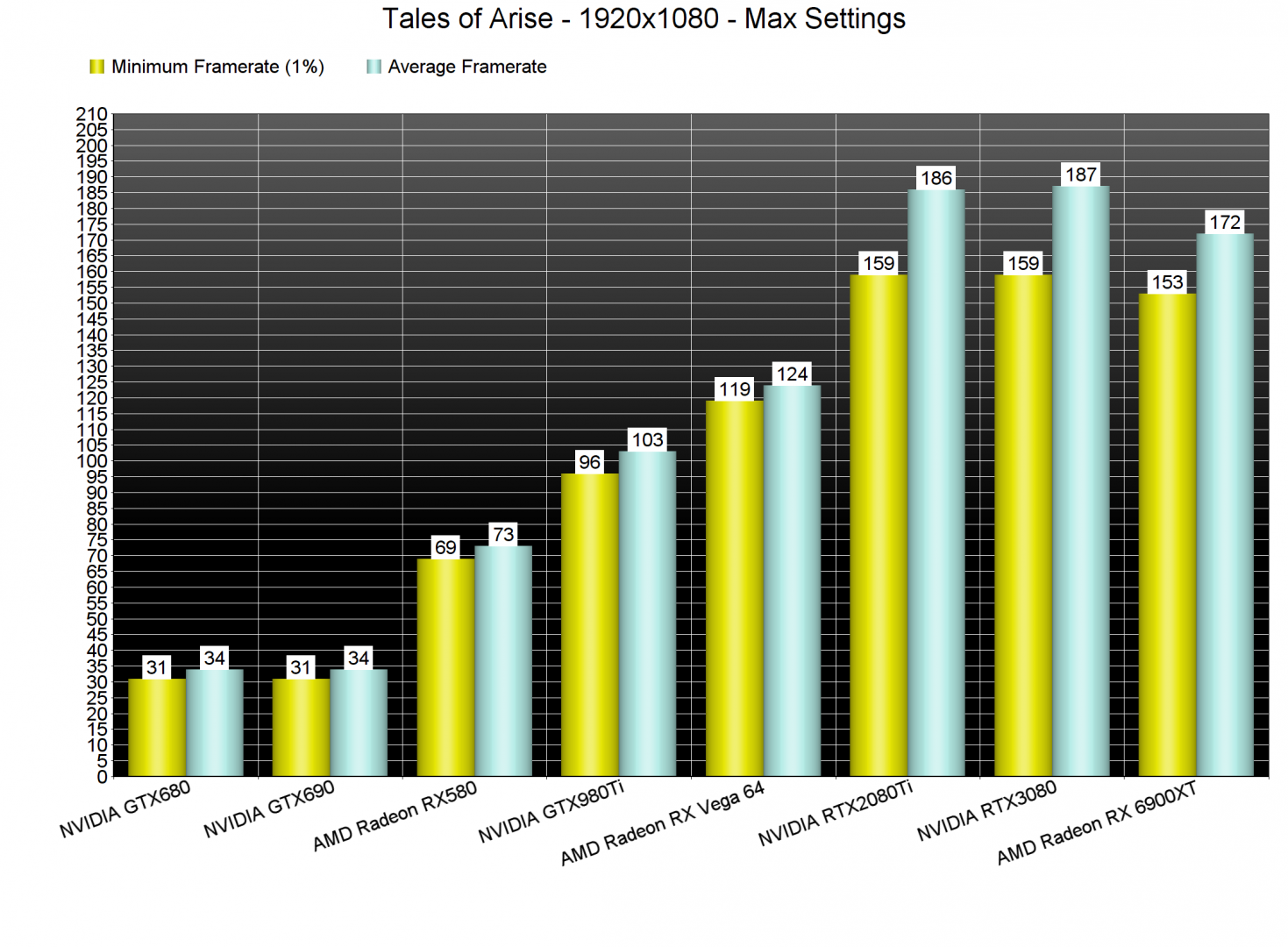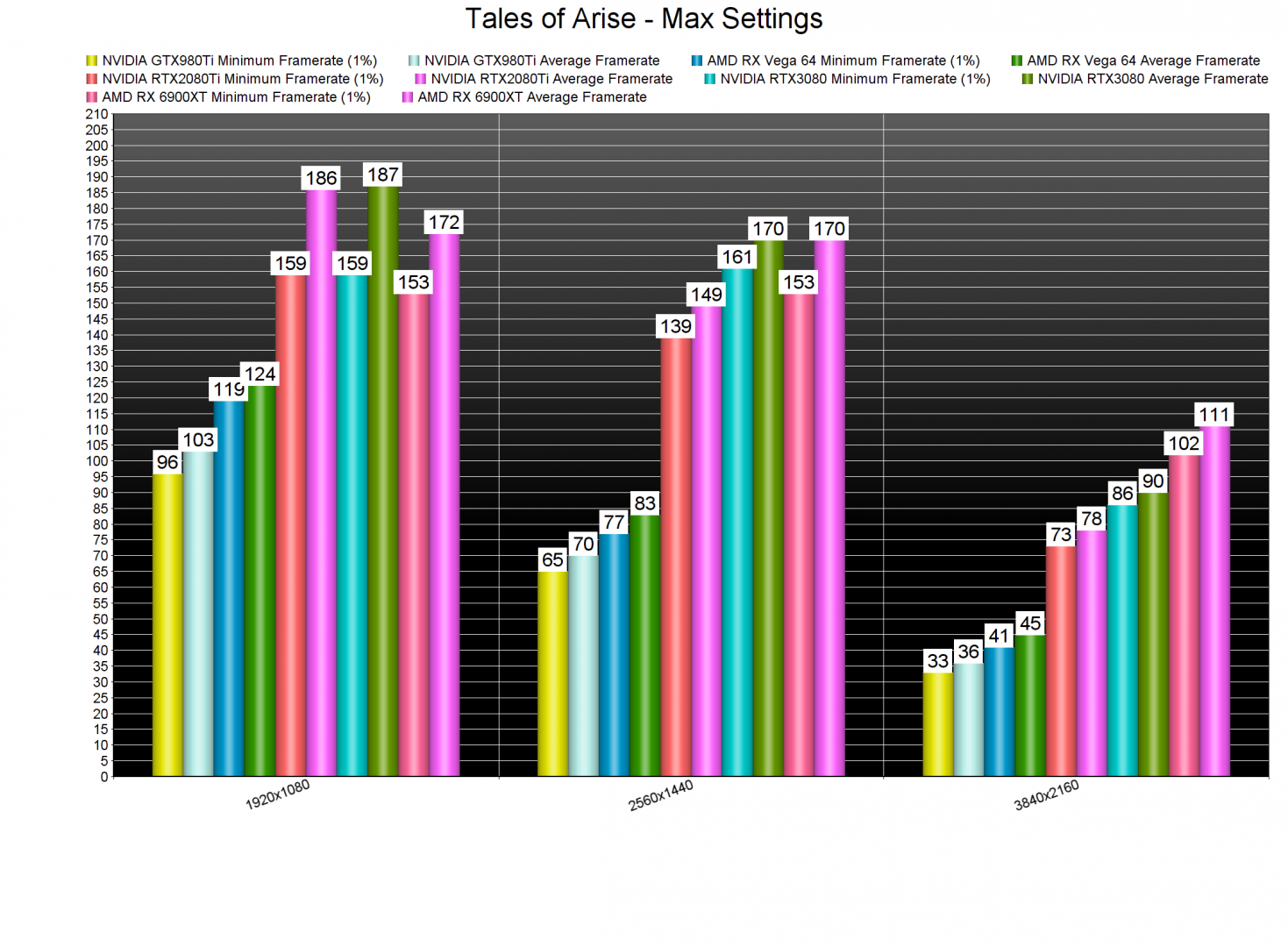Bandai Namco has released its latest action RPG, Tales of Arise, on PC. Powered by Unreal Engine 4, it’s time to benchmark it and see how it performs on the PC platform.
For this PC Performance Analysis, we used an Intel i9 9900K with 16GB of DDR4 at 3600Mhz, AMD’s Radeon RX580, RX Vega 64, RX 6900XT, NVIDIA’s GTX690, GTX980Ti, RTX 2080Ti and RTX 3080. We also used Windows 10 64-bit, the GeForce 471.96 and the Radeon Software Adrenalin 2020 Edition 21.8.2 drivers. Since NVIDIA has not added any SLI profile for this game, our GTX690 performed similarly to a single GTX680.
Bandai Namco has implemented a few graphics settings to tweak. PC gamers can adjust the quality of Menu Textures, Shadows and Anti-Aliasing. There are also options for Bloom, Motion Blur, Screen Space Reflections, Ambient Occlusion, Volumetric Lighting, Global Illumination, Depth of Field and Screen Space Shadows. The game also has a Resolution Scaler, and supports uncapped framerates.
Tales of Arise does not come with a built-in benchmark tool. As such, we’ve decided to benchmark the following scene. This village is after an hour or so of gameplay, and appears to be more taxing than all the previous areas.
In order to find out how the game scales on multiple CPU threads, we simulated a dual-core, a quad-core and a hexa-core CPU. Without Hyper-Threading, our simulated dual-core system was able to push a minimum of 98fps and an average of 118fps at 1080p/Max Settings. However, we did experience some stutters while exploring the environment. Thankfully, those stutters were resolved the moment we enabled Hyper-Threading. And, as we can see, Tales of Arise does not require a high-end CPU in order to be enjoyed.
The game also does not require a high-end GPU. Even our AMD RX580 was able to push a constant 60fps experience at 1080p/Max Settings. What this basically means is that the game can run smoothly on a huge range of PC configurations.
At 1440p/Max Settings, our top five GPUs were able to provide a smooth gaming experience. As for 4K/Max Settings, our RTX2080Ti, RTX3080 and RX 6900XT had no trouble running it. We should also note that the RX 6900XT is 19% faster than the RTX3080 in 4K. However, and since this game uses DX11, it’s slower than the RTX3080 at 1080p. This is most likely due to the additional CPU/memory overhead from AMD’s DX11 driver.
Graphics-wise, Tales of Arise looks beautiful, main due to its art style. However, the game suffers from a truly and horrendously low LOD (even on Max settings). Enemies and objects are constantly popping up a few meters ahead of you. This is really annoying and we really don’t know why Bandai Namco has not offered a higher setting on PC. After all, the game is not that demanding. Apart from that, the game looks fine. Again, its art style and cel-shaded visuals are what make it “pop“. So while its tech is not that impressive, its graphics are pleasing to the eye.
We should also mention a really awkward mouse behavior. Although the mouse movement is fine at Borderless, there are some major issues in Fullscreen Mode. To be more specific, the mouse movement is completely broken in the menus when using Fullscreen Mode. In Borderless, however, the mouse is working properly. Thus, we suggest avoiding Fullscreen (at least until Bandai Namco fixes this issue). Also note that the in-engine cut-scenes are locked to 60fps (we did not experience any stutters or frame pacing issues with them).
All in all, Tales of Arise runs silky smooth on the PC. The game does not require a high-end PC system and can run smoothly on a wide range of PC configurations. The game also displays proper on-screen K&M indicators, and we did not experience any crashes. Mouse movement was also fine in Borderless Mode, and the game felt and played great with K&M. My only gripe is with the horrendously low LOD, which should be higher on PC. Other than that, Tales of Arise is a polished PC game.
Enjoy!

John is the founder and Editor in Chief at DSOGaming. He is a PC gaming fan and highly supports the modding and indie communities. Before creating DSOGaming, John worked on numerous gaming websites. While he is a die-hard PC gamer, his gaming roots can be found on consoles. John loved – and still does – the 16-bit consoles, and considers SNES to be one of the best consoles. Still, the PC platform won him over consoles. That was mainly due to 3DFX and its iconic dedicated 3D accelerator graphics card, Voodoo 2. John has also written a higher degree thesis on the “The Evolution of PC graphics cards.”
Contact: Email


